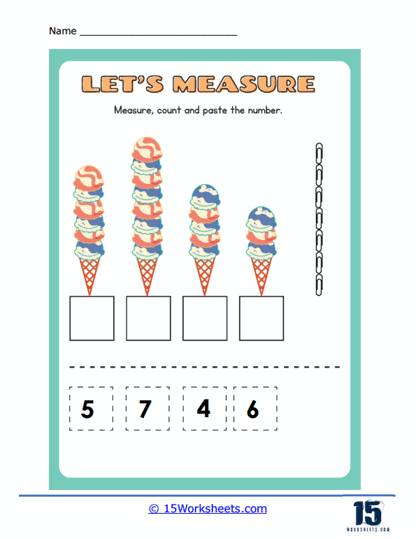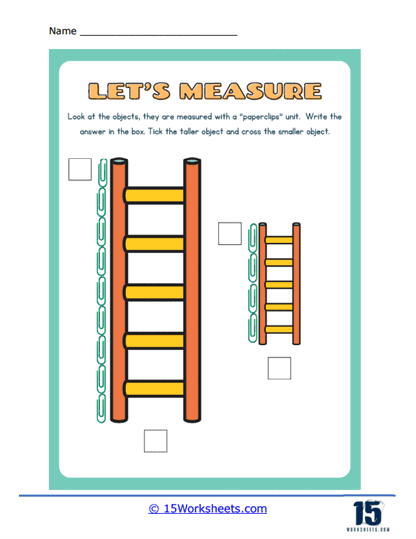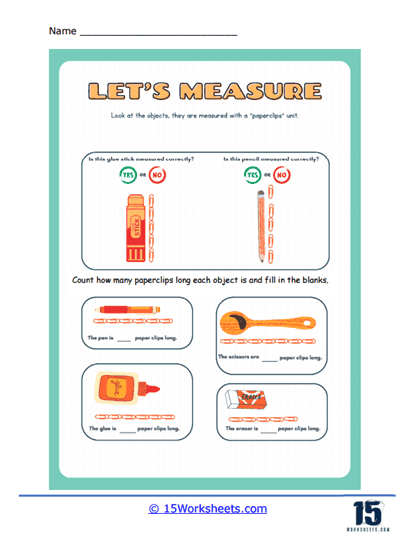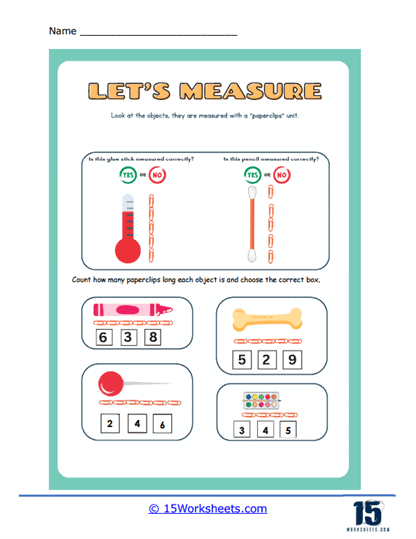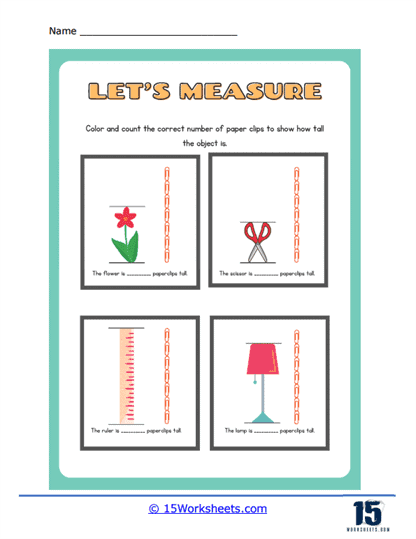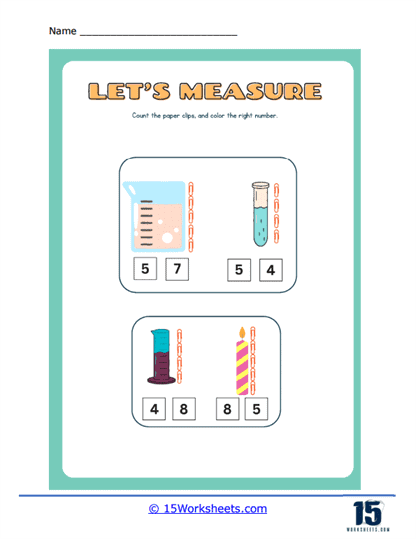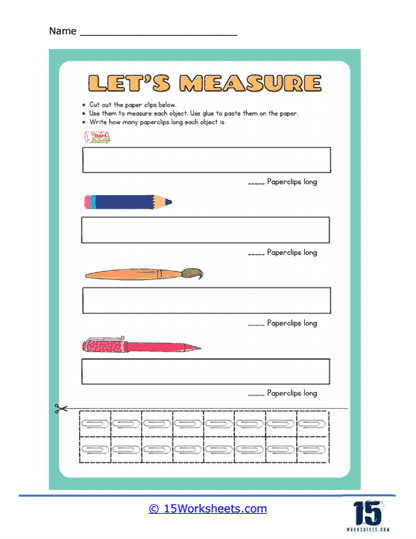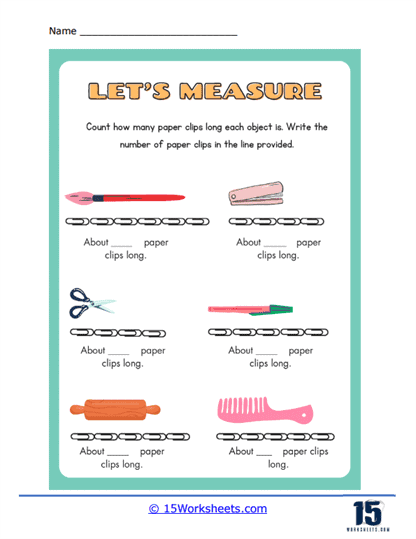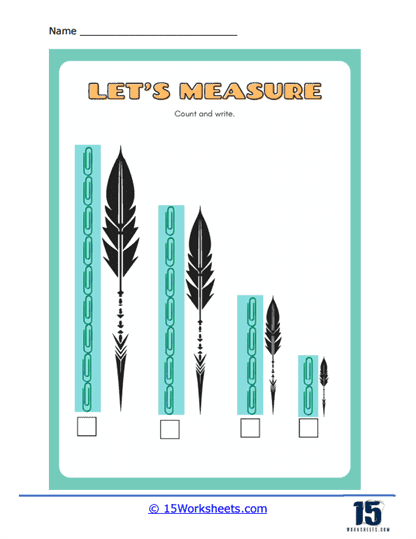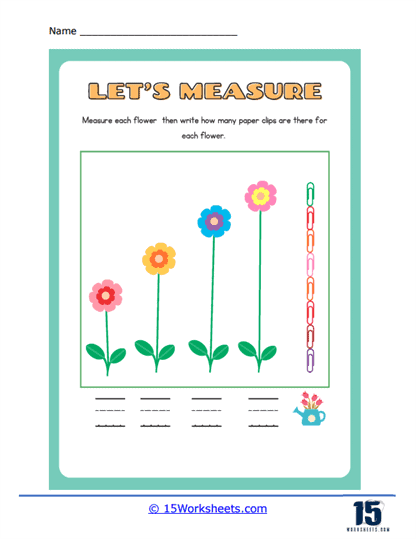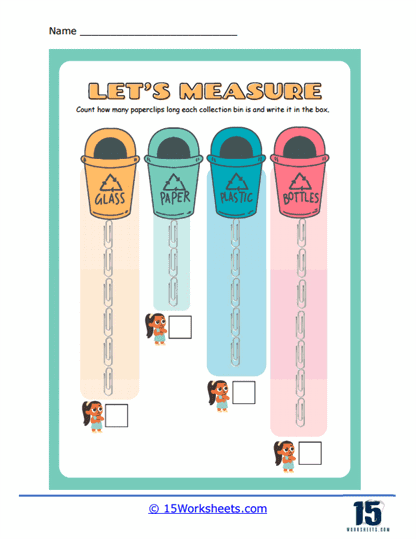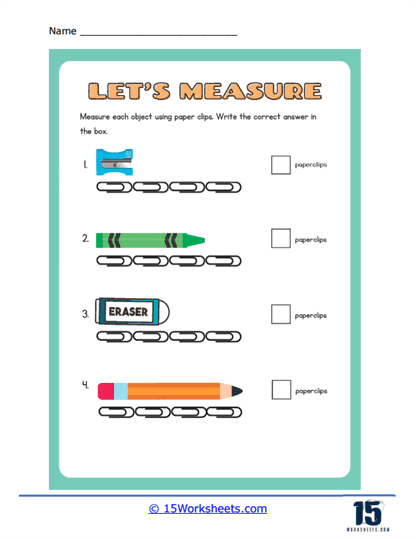Measuring With Paper Clips Worksheets
About These 15 Worksheets
Measuring with paper clips worksheets are used to help kids explore concept of measurement in a hands-on, tangible way. Instead of traditional units of measure, like inches or centimeters, students use standard-sized paper clips to measure the length or height of various objects. These worksheets combine visual aids with practical exercises to teach foundational measurement skills.
Using non-standard units like paper clips provides children with a concrete, accessible tool that helps make the abstract concept of measurement more relatable. By physically placing paper clips along the length or height of objects, students develop a tactile understanding of size and dimension.
These worksheets are a hands-on approach to introduce the foundational concepts of measurement to young learners. By using an everyday item as a non-standard unit of measure, students can grasp the basic idea of length and height in a tangible, accessible manner. These worksheets typically incorporate a mix of visual aids, practical exercises, and conceptual challenges to ensure comprehensive learning.
Types of Exercises on These Worksheets
Straight Measurement – This is the most straightforward exercise. Objects or lines are drawn on the worksheet, and students are asked to determine how many paper clips long each one is. They might place actual paper clips on the worksheet or use a reference picture of a paper clip to help them gauge the measurement.
Comparison – Two or more objects or lines are presented, and students must determine which is longer or shorter based on the paper clip measurement method.
Estimation – Before measuring with paper clips, students might be asked to estimate the length of an object and then compare their guess to the actual measurement.
Ordering by Size – Several objects or lines are given, and students must measure each with paper clips. Then they’re asked to order them from shortest to longest or vice versa.
Draw and Measure – Students might be given a certain length, like “5 paper clips long,” and are then asked to draw an object or line that they believe matches that length. They can then measure their drawing with paper clips to see how close they were.
Grouping by Size – After measuring multiple items using paper clips, students can be asked to group objects based on their size (e.g., objects that are 3 paper clips long, 4 paper clips long, etc.).
Why Nonstandard Measurement Is Helpful For Students
Teaching students to measure length using nonstandard tools, such as paperclips, plays a foundational role in early mathematics education. This method offers a tangible introduction to the often abstract concept of measurement. By allowing students to physically touch and see the units, they gain a more concrete and relatable understanding.
Using this type of approach nurtures their estimation skills, prompting them to guess an object’s length before actually measuring. This hands-on method not only hones their observational capabilities as they compare and discern the sizes and lengths of different objects, but it also lays the groundwork for understanding standard units of measurement.
As students become comfortable with the idea of measuring using familiar objects, transitioning to standard tools like rulers becomes a more intuitive process. The ready availability of objects like paperclips ensures that students can practice measurement in various settings, integrating classroom learning with the world around them.
Nonstandard measurement can foster creativity, encouraging students to think laterally and explore measurement using diverse objects. This method is also conducive to group activities, enabling students to collaborate and measure larger items together.
A vital lesson that emerges from this method is understanding variability. Since tools like paperclips aren’t uniform in size, students begin to grasp the significance of standardized units and their accuracy. The real-world application of measuring with familiar objects underscores the practicality of mathematics, emphasizing its relevance outside the classroom.



